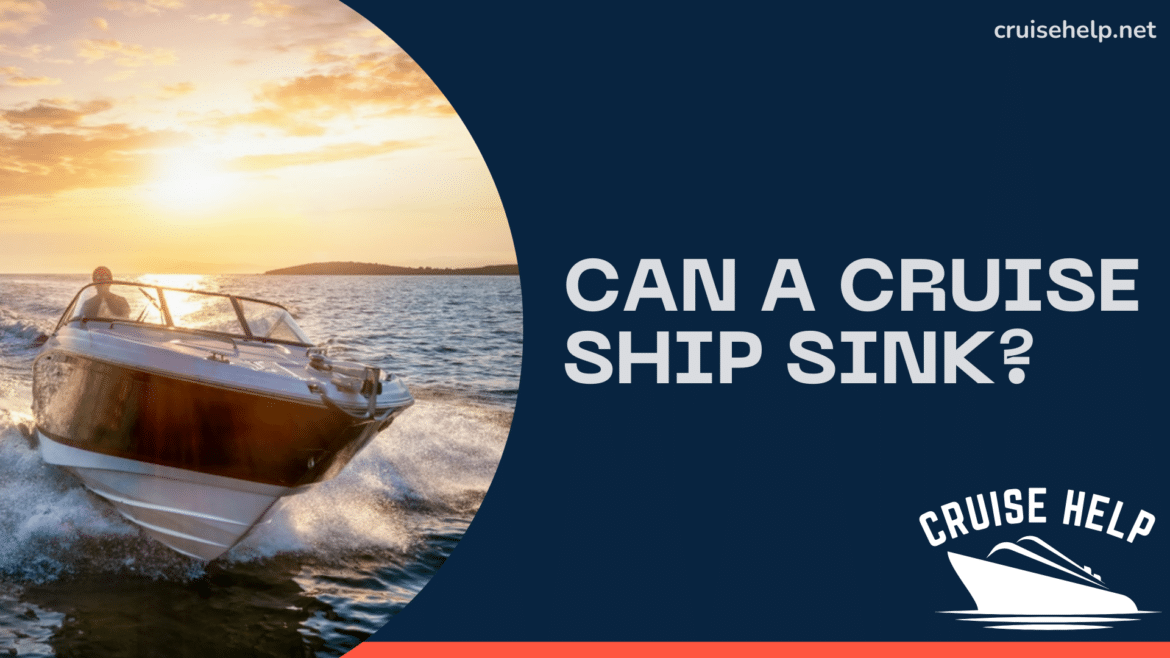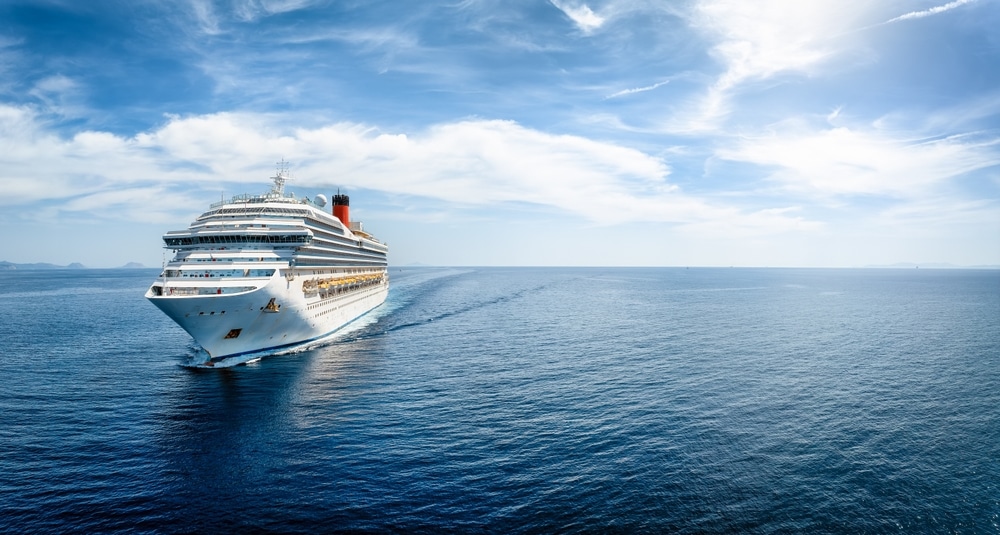Table of Contents
When you picture a cruise ship, you likely imagine a relaxing vacation with endless ocean views, sunny decks, and fun activities. But for many. There’s a nagging question in the back of their minds: Can a cruise ship actually sink? With famous incidents and dramatic scenes from movies, it’s no wonder people are curious about the safety of these massive vessels. The truth is, modern cruise ships are incredibly well-designed. Equipped with advanced technology and safety measures to handle all kinds of challenges at sea. In this article, we’ll explore whether a cruise ship can sink, what safety risks exist, and how these floating cities are built to keep passengers safe.
How Often Do Cruises Sink?
One of the most common questions asked is, how many cruise ships sink each year? Statistically, how often do cruises sink is very rare. Large-scale ships sinking is an anomaly in modern times. Cruise ship accidents like sinking are infrequent, with modern ocean liners boasting highly sophisticated communication systems and technology designed to prevent disasters. While smaller incidents may happen, such as fires or passengers and crew injuries, full-scale ship accidents are exceptionally uncommon. Historically, shipwrecks were far more prevalent, but today, advances in design and safety mean that cruise ships are much safer. 
Notable Cruise Ship Sinkings
Although rare, sinking has occurred. When sinking occurred, the events often became a global headline due to the sheer number of people involved. One of the most well-known tragedies involving a cruise-like vessel is the sinking of the Titanic in 1912. While not technically a modern cruise ship, the ocean liner sank after striking an iceberg in the North Atlantic, and more than 1,500 people died.
In more recent years, there was the Costa Concordia disaster in 2012. The ship ran aground off the coast of Italy, leading to the deaths of 32 passengers and crew. This was one of the most high-profile modern cruise ship accidents, and it led to increased scrutiny of safety protocols in the cruise industry. The disaster was largely attributed to human error.
Additionally, in 1994, a passenger ferry named the MS Estonia sank in the Baltic Sea. Resulting in the loss of 852 lives. While not a traditional cruise ship, this event raised significant concerns about maritime safety. Such accidents underscore the importance of strict regulations and the role of crew members in ensuring passengers’ safety.
Factors Contributing to Cruise Ship Safety
Modern cruise ships are designed to withstand harsh conditions at sea, including bad weather, thanks to cutting-edge engineering and advanced communication systems. However, several factors can contribute to risks, including human error, mechanical failures, or collisions with other vessels, such as a cargo ship. Despite this, the cruise line industry has worked diligently to minimize risks by implementing rigorous safety protocols and training crew members to handle emergencies effectively.
Safety Protocols and Crew Training: Every major cruise line, including Celebrity Cruises, has strict safety protocols in place. Before any voyage, passengers and crew are required to participate in safety drills to prepare for potential emergencies. Crew members undergo specialized training to handle situations like fires, man overboard, or severe weather conditions. Modern ships are also built with multiple watertight compartments to prevent flooding from spreading, which significantly reduces the chances of ships sinking.
Advanced Technology: Modern cruise vessels are equipped with state-of-the-art communication systems, radar, and GPS tracking that allow ships to avoid dangerous waters and obstacles. These systems are essential for monitoring weather conditions and coordinating with nearby vessels. Which helps prevent collisions and other ship accidents.
Emergency Response and Lifeboats: In the rare event of a major incident. Every ship is equipped with enough lifeboats to accommodate all passengers. Modern cruise ships often exceed the minimum lifeboat capacity requirements. The success of the emergency response depends on well-executed evacuation drills and the crew members’ ability to coordinate safely.
Other Risks on a Cruise
While the chances of a cruise ship sinking are incredibly low, other risks still exist during a cruise vacation. One of the less-discussed dangers is falling overboard. While rare, people have fallen overboard due to reckless behavior, high winds, or intoxication. Fortunately, most cruise ships have high railings and other safety measures to prevent this from happening. There are also man-overboard detection systems on many modern ships to ensure a rapid response in case someone falls into the water.
Another type of ship accident is collisions. Not with icebergs like the Titanic, but with smaller vessels like cargo ships or in crowded ports. However, cruise ships’ sophisticated navigational equipment greatly reduces the likelihood of such incidents.
Industry Changes After Accidents
In response to past disasters, the cruise industry has become more vigilant about enforcing stringent safety measures. Following incidents like the Costa Concordia, changes were made to ensure the safety of passengers and crew. For example, modern cruise ships are now required to conduct mandatory safety drills within 24 hours of departure. These drills are aimed at familiarizing passengers with evacuation routes, lifeboat locations, and how to respond to various emergency alarms.
In addition to improving on-board safety, ship companies have also invested heavily in the design and construction of their vessels. The ships are now built to be more resilient in the face of severe weather and other maritime challenges. This focus on safety is particularly important for routes through challenging waters. Such as the Baltic Sea, where weather conditions can change rapidly.
Conclusion
So, how many cruise ship sink per year? The answer remains extremely low. While sinking occurred in notable cases, the frequency of ship sink in modern times is rare, with only a few incidents in the past few decades. How many cruises sink per year is an almost negligible figure, as the cruise industry prioritizes safety. Thanks to advanced communication systems. Well-trained crew members, and stringent safety protocols, cruises remain one of the safest forms of travel.

